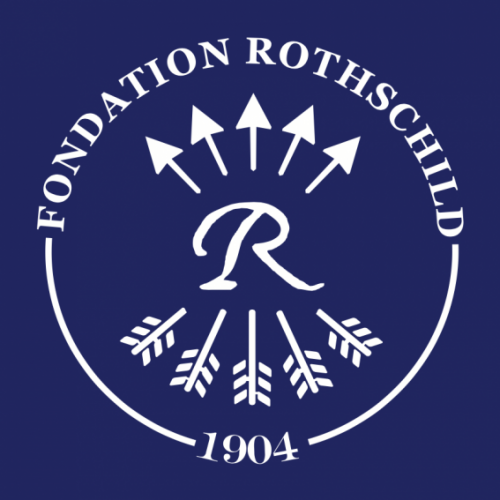After Amalia, Joel Whitebook introduces us to Freud’s second mother: the Catholic nanny who took care of him during the first years of his life and gave him the emotional support he lacked. In retrospect, it is also to this childhood acquaintance that Freud will trace his discovery of sexuality. From one mother to the other, these two portraits powerfully illuminate the problematic place that Freud gave to women in the science of psychoanalysis; and the elucidation that it calls for today by passing the life of the man Freud through the sieve of his own theory.
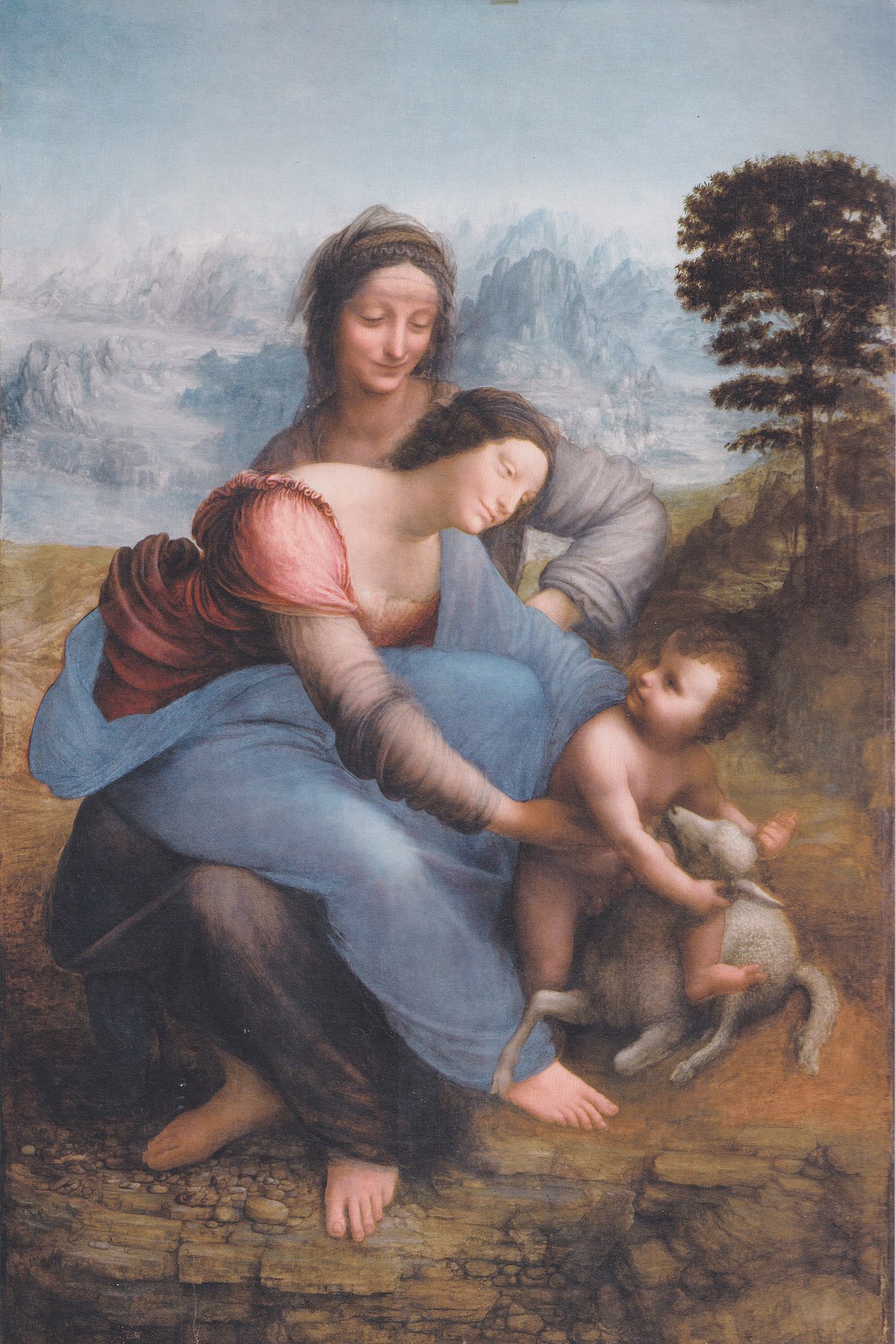
Read the first part of “Freud’s Two Mothers”: HERE.
“The Original Catastrophe”
Freud’s representation of the maternal imago was further complicated by the fact that he had a “second mother”: a Czech Catholic nanny, the Kinderfrau who cared for him for the first two and a half years of his life.[1] We cannot be certain to what extent Amalie relied on the Kinderfrau prior to Julius’ death, although it is safe to assume, given the stress she must have been undergoing and her lack of experience in caring for an infant, that it was relatively extensive. Once Julius died, however, it is clear, as Harry Hardin, an expert in early maternal loss, maintains, that the Czech nursemaid became Sigmund’s “sole caretaker” – a position she retained until she abruptly disappeared six months later.[2]
Hardin argues that Freud’s Kinderfrau not only tended to his physical needs, but, after the psychological death of his mother, also became his primary source of emotional support. She became, in other words, what analysts call “a substitute object,” who replaced the mother he had precipitately lost.[3] It is important to note that the forgotten memories of the Kinderfrau emerged during the early, critical phase of Freud’s self- analysis, which he had officially undertaken in response to Jacob’s death. He had been driven into a period of intense mourning, in which many of the significant losses of his earliest years were reactivated as a result of the loss of his father. The timing of the discovery of these repressed memories indicates the important position that the Kinderfrau occupied in Freud’s psychic development. And although scant, what Freud says about her is so laden with meaning that it gives us an idea of the significance she had for him.
Freud displaced many of the negative feelings that he kept split off from his representation of Amalie onto the extremely ambivalent representation he formed of his Kinderfrau. The picture that emerges from his remarks is of a woman who combines the features of both the “good mother” and the “bad mother” in extremis: nurturing and frightening, gratifying and reprimanding, praising and devaluing. Like his heroes Oedipus, Leonardo, and Moses, Freud had “two mothers,” and the representation of each was itself deeply divided, although he tended to isolate his negative feelings toward Amalie. Freud’s description of the Kinderfrau uses terminology that accurately applies to the apotheosis of the bad mother – namely, a witch. In addition to her being “an ugly, elderly, but clever woman,” he writes that “the prehistoric old nurse” was also a “strict disciplinarian” who treated him harshly if he “failed to reach the required standard of cleanliness.”[4] Furthermore, like the archaic mother with her frightening phallic features, she both excited the pre- pubescent boy’s sexuality and belittled the fact that he was immature and helpless.
A psychoanalytically informed biographer wishes that Freud had pro- vided more details when he writes that she was his “teacher in sexual matters,” and that she “complained because [he] was clumsy and unable to do anything.”[5] He reports an incident which must have been especially confusing and terrifying to a small boy, especially since it involved a woman who was a stickler for hygiene: “She washed me in reddish water” – presumably reddish from her menstrual blood – “in which she had previously washed herself.”[6] Freud makes an anomalous statement, which for some peculiar reason has received virtually no commentary in the literature and which throws the idée reçu that he abandoned the seduction theory in 1897 into question. The man who just one month earlier had supposedly renounced the seduction theory, which had portrayed the father as the villain and seducer, now states that his nursemaid was his seductress. He writes, “I only indicate that the old man plays no active part in my case, but . . . that in my case the ‘prime originator’ was an ugly, but clever woman” who revealed the secrets of sexuality to him while simultaneously enlightening him about heaven and hell.[7] Because of his inability to face the frightening aspects of the early mother – what Professor of English Literature Coppélia Kahn has referred to as his “matrophobia” – which we will examine in detail – Freud could not register the significance of this stunning remark and left it hanging.[8]
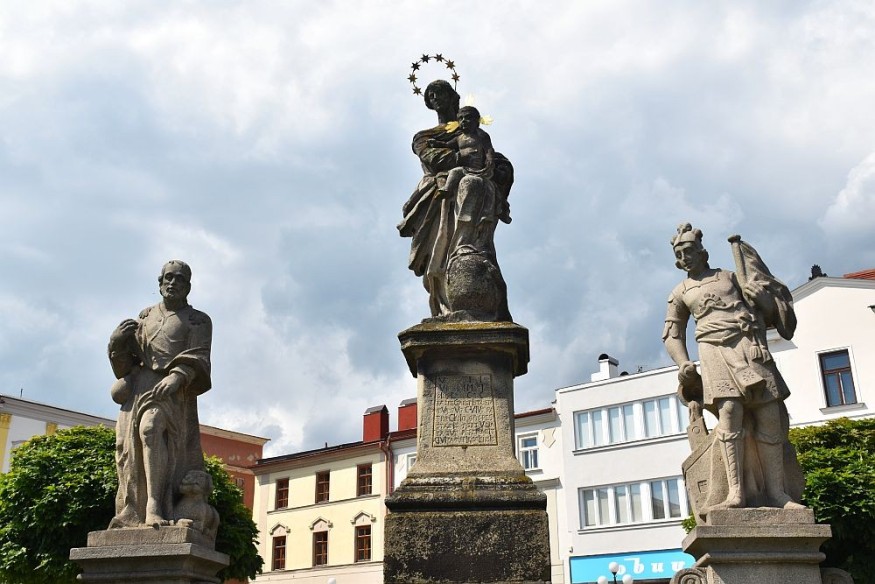
Much to our astonishment, Freud’s enlightenment about the afterlife took place during regular excursions, in which his Czech nanny would escort young Schlomo Sigismund from one of Freiberg’s numerous Catholic churches to another. (The town did not contain a synagogue.) On these pilgrimages, she would preach to him about “God Almighty and hell,” and her sermons made such an impression on the young boy that he would re-enact them for his parents when he returned home.[9] That the Freud family allowed this Catholic woman to schlep their son around the churches of Freiberg, while attempting to instill a sense of religion in him, shows how secular – indeed, how blasé – they were concerning religious matters.
These expeditions with his Kinderfrau surely would have had a powerful impact on Freud’s later views on Christianity and on religion in general. We must therefore ask what Freud’s experience during these early encounters with Catholicism would have been like. As Vitz observes, Freud would have been exposed to the sensuality (Sinnlichkeit) of the churches, liturgy, and ceremonies: the paintings and statues of the Madonna and child and of the various saints, the distribution of the communion, the Latin of the Mass, the smell of the incense, the richly colored robes of the priests, the candles and the “bells, organ, and instrumental music, as well as choirs and chants and the various forms of music.”[10] The last point is especially noteworthy, given Freud’s strong aversion to music, which we will examine in due course. And as we have noted, not only was Moravian Catholicism “especially devout,” but its “devotion to the Virgin Mary was so pervasive that” the region “became known as a ‘Marian Garden’.”[11] Thus, Vitz argues, while Freud would undoubtedly have observed the authority of the priests and picked up on “references to the Pope,” the “strong masculine characteristics of Catholic Christianity would not have been” central to his experience. Rather, the Catholic world he was exposed to centered on the figure of the Madonna and was overwhelmingly feminine and maternal.[12]
The atmosphere in these churches, as Vitz emphasizes, was thus both profoundly sensuous (sinnlich) and permeated with a maternal presence. The combination of these two qualities must have made a lasting impression on Freud, for eighty-odd years later he not only connected them in Moses and monotheism but also adduced them as evidence of Catholicism’s regressive character vis-à-vis Judaism.[13]
But whatever the impact of these excursions and whatever the Kinderfrau’s shortcomings, Freud acknowledged his gratitude and his deep love for her without equivocation. He recognized that, along with fear and feelings of inadequacy, she had also instilled in him “a high opinion” of his own “capacities” and, like Jacob and Amalie, contributed to the self-assurance that allowed him to pursue his life’s ambitions.[14] In the most important statement of all, Freud writes in the depths of his self-analysis that if he has the fortitude to complete the project, he “shall be grateful to the memory of the old woman who provided [him] at such an early age with the means for living, and going on living.” This assertion that his Kinderfrau had supplied him with the means of life helps to confirm the hypothesis that she stepped in to replace his “dead mother” who had succumbed to a debilitating depression. In other words, by serving as a “substitute object,” this nanny enabled Freud to psychologically survive a profoundly traumatic period in his life. In a letter to Wilhelm Fliess – the charismatic ear, nose, and throat specialist with extravagant speculative proclivities, with whom Freud would form an intense relationship in the 1890s – he expresses his gratitude to his nanny, and his tender feelings break through: “As you can see, the old liking is breaking through again today.”[15]
From loss to loss
The traumas, however, did not end with Amalie’s depression. At the age of two and a half, Freud also lost his Kinderfrau – the very person who had rescued him when his mother became psychologically unavailable. To make matters worse, with the birth of his younger sister Anna, he was at the same time struggling with the introduction of a new rival into his world. And on top of that, the loss of the nanny was abrupt and apparently unexplained. Later, during his self-analysis, when Freud asked his mother about the old woman, he was told that she had been caught stealing during Amalie’s convalescence following the birth of Anna. Once the crime was uncovered, so Amalie informed Freud, his older half-brother Philipp called the police, and the Kinderfrau was promptly taken off to jail, tried, and imprisoned. At the age of two and a half, Freud must have been confused not only by his mother’s pregnancy and the appearance of a new infant, but also by the sudden – and apparently unaccounted for – disappearance of the nanny standing in for the absent Amalie. It has been argued that the disappointment and rage provoked by having been “abandoned” by his Kinderfrau – which is how a child of that age would have experienced it – contributed to Freud’s hostility toward Catholicism as well as his longing for Rome. The argument is not without merit.[16]
In addition to the death of Julius, Amalie’s depression, and the Kinderfrau’s disappearance, Freud was subjected to yet another major loss early in his life. At approximately three and a half years old, “the happy child of Freiberg,” as he referred to himself as a grown man, was uprooted from his first idyllic home, and after a year in Leipzig was trans- planted to Leopoldstadt, the overcrowded and wretched Jewish quarter of Vienna.[17]
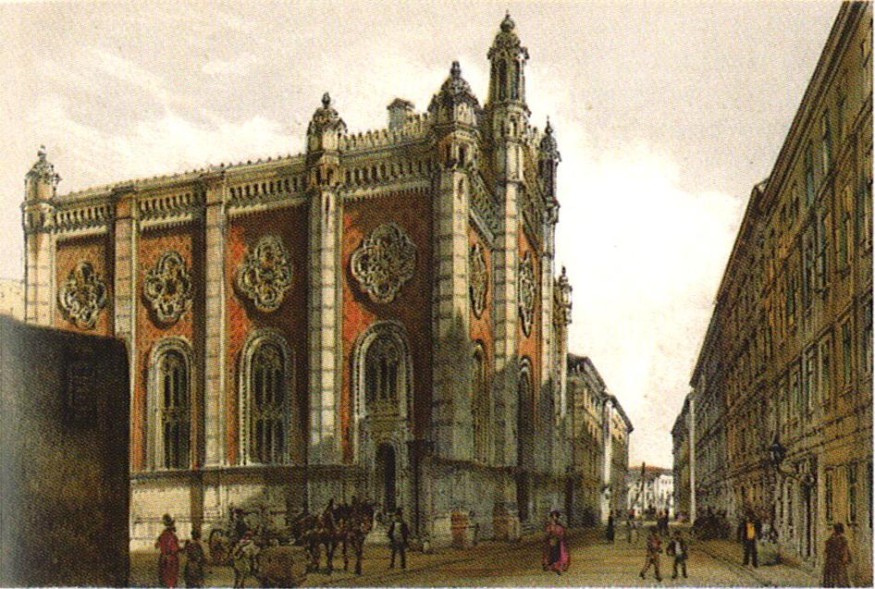
The reason for this move is not entirely clear. It may have been due to the fact that Sigmund’s older half-brothers Emanuel and Philipp were involved in illegal activities, or perhaps to the suspicion that Philipp was having an affair with Amalie. The official explanation was that Jacob’s business failed because of developments in the local economy – circumstances that were beyond his control. This explanation has since been contested by later scholarship and by the fact that Ignaz Fluss and his family, who were friends of the Freuds, remained in the area and prospered.[18] Regardless of which “of these various reasons was responsible for the Freuds’ departure,” one thing is clear, as Krüll observes: “The adults in whose company little Sigmund left Freiberg were in a state of anxiety or even panic, and no explanation for this was given to Sigmund.”[19] Therefore, at the same time as the grown-ups were transmitting their agitation to the young boy, they were also unavailable to help him contain his own fear, sorrow, and anger. No one was.
Another aspect of the exodus from Freiberg would have increased its traumatic impact even further – namely, that Freud lost “the close-knit, extended family that had provided [him] with what security he enjoyed during his first three years.” Not only did Freud’s older half-brothers Emanuel and Philipp “[vanish] from his life,” but his “playmate and best friend John and John’s sister Pauline” disappeared with them, just as his Kinderfrau had disappeared the previous year.[20] As evidence of the strength of the family bonds that had been established in Freiberg, Freud’s biographer Ronald William Clark observes that Freud “maintained an affection” for his relatives after their departure to England “that went far beyond the family feelings of a typically tight-knit Jewish family.”[21] Clinical experience indicates, moreover, that “children without reliable maternal attachments typically gain security from other relationships” – often including their caregivers – “and their familiar surroundings.” Moreover, while the loss of his extended family further aggravated Freud’s early trauma, the growth of his nuclear family did not mitigate his loneliness.[22] Freud did not view Anna and the four other sisters and one brother who followed in rapid succession as allies. On the contrary, he saw them as rivals for Amalie’s affection and further evidence of her “betrayal.” As the editors of Freud: the fusion of science and humanism point out, the central theme in idealizing transferences is “perfection.”[23] They maintain that children who experience a “premature disturbance of [their] illusion of omnipotence” and suffer a traumatic de-idealization of their parents – as Freud did – often create merger fantasies “with idealized parental imagoes” in order to combat the disillusionment. Because of the premature disappointment, the internalization of the parents that is necessary for healthy development does not take place. As a result, the psychic structures that should have been created through that process of internalization are not formed. The consequence, as articulated by Heinz Kohut, an analyst who has been at the forefront of exploring the archaic and narcissistic strata of the psyche, is that “such persons are forever . . . yearning to find a substitute [and] seeking with addiction like intensity . . . to establish a relationship to people who serve as stand-ins for the omnipotent idealized self-object – i.e. to the archaic precursor of the missing inner structure.”[24] Kohut’s description accurately described the idealization-hunger that Freud manifested for many years.
The Consequences of Freud’s Early Traumas
It is in the appropriately entitled article “Screen memories” that Freud broaches the fact that his first three and a half years involved significant trauma. In that autobiographical paper, when Freud speaks of “the original catastrophe” that “involved [his] whole experience,” in a thoroughly timid and circumspect way, he refers only to the departure from Freiberg. Regarding life in Vienna, he goes on to say: “Long and difficult years followed, of which, so it seems to me, nothing is worth remembering.”[25] The years in Vienna, however, are not the only thing Freud does not care to remember. While being uprooted from bucolic Freiberg and set down in the slums of Leopoldstaadt would surely have been traumatic, “the original catastrophe” was significantly larger in scope than Freud could admit. The loss of his Moravian home was in fact a cipher – a “screen” to use the term he introduces in the article – for all the traumatic losses that had preceded it: Julius’ death, Amalie’s depression, the disappearance of his nanny, and the dispersion of his extended family. By restricting him- self to the move and its aftermath, Freud could avoid remembering the catastrophes and traumas that had preceded it.[26]
It is a fundamental tenet of psychoanalysis that all important psychic phenomena are “over-determined”: They are the result of a concatenation of multiple factors that generally include adaptive and defensive elements, which must be sorted out on a case-by-case basis.[27] Freud’s response to the traumatic experiences of his early years is no exception.
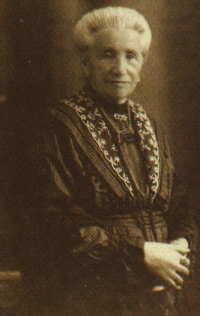
Because he could not rely on the adults in his world to protect and care for him adequately, he was compelled to take over their tasks and was forced to develop his ego “prematurely” – that is, before he should have. As Freud himself recognized as an adult, he had not been allowed to fully indulge the “immature” experiences of “the magical years” that are a necessary condition for developing a truly mature self – which is to say, a self that is strong, flexible, and richly integrated.[28] Freud’s “precocious” ego-development had undeniable advantages; it provided him with exceptional psychological strengths that enabled him not only to accomplish the monumental achievements associated with his name but also to endure a relentless onslaught of hardships that would have defeated most mortals.[29] At the same time, however, he paid a high price to attain those strengths.
The strategy Freud employed not merely to adapt, but to survive, resulted in significant restrictions in his character structure, and, as a result of them, in the range and flexibility of his thinking, remarkable as those qualities nonetheless were. The restrictions, in turn, had serious consequences for the development of psychoanalysis.
As we have seen, Breger argues that “The traumatic experiences of Freud’s first four years” and the panoply of emotions attached to them, “were dissociated, not integrated into a coherent sense of self. They existed in a separate compartment of his personality, protecting him from their disruptive effects.”[30] Although this defensive dissociation protected Freud and allowed him to function at an exceptionally high level, it also largely cut him off from the realm of early pre-Oedipal experience. And because the world of archaic experience was too dangerous for Freud to explore – to do so might bring back the overwhelming anxiety and sense of helplessness he had experienced as a child – it could not be integrated into his theory. The pre-Oedipal world that Freud had difficulty entering is primarily pre-verbal, affective, sensorial, and motoric in nature, and it centers on the infant’s relation to the early mother. Because the child’s primary developmental task during this phase is to separate satisfactorily from the symbiotic mother and to establish adequately differentiated representations of itself and of the object, its central theme is obviously “separation.”[31] Other closely related themes – including “helplessness” and “loss” as well as “omnipotence” and “magic” – emerge in the infant’s struggle to deny the profound psychic pain that separation entails.
As a result of the way he responded to his early traumatic experiences, Freud developed a phallologocentric – that is, masculinist and hyper-rational – character. The overwhelming anxiety we can assume he experienced during his first three and a half years and his inability to do anything about it instilled in him a deep hatred of passivity, help- lessness, and dependence that lasted throughout his life. (It will there- fore come as no surprise that helplessness became a central topic in his theory of human nature.) Freud’s loathing of passivity and helplessness, moreover, produced an understandable counter-reaction: a valorization of self-sufficiency and independence that entailed an investment in activity, self-control, rationality, objectivity, moral rectitude, courage, and a disciplined work ethic. Indeed, according to Ernest Jones, Freud’s associate, supporter, and first definitive biographer, Freud’s “great dislike of helplessness and his love of independence” were two of his best-known “character traits.”[32] In studying Freud’s biography, however, a question often arises that is difficult to answer: When does his laudable and adaptive valorization of autonomy tip over into an idealization – if not a fetishization – of narcissistic self-sufficiency and create a counter-phobic contempt for passivity and dependency? There are important times when allowing oneself to be passive and dependent is not only “permissible” but is in fact necessary for achieving a fulfilled life – for example, when one is in love or in psychoanalysis. Unfortunately, however, Freud’s fearful and contemptuous attitude toward passivity prevented him from analysing it in himself, and this meant he could not adequately explore the significance of the topic for psychoanalytic theory in general, an inability that was responsible for a consequential limitation in his thinking.
We can describe Freud’s character as phallocentric, the first half, so to say, of being phallologocentric, not because autonomy and independence – and the other attributes Freud associated with them – are in fact “masculine,” but because he thought they were. He lionized these attributes at the expense of other personality traits that he devalued as “feminine” – for example, helplessness, passivity, dependence, emotionality, irrationality, lack of discipline, and an irresolute sense of morality. In addition to the misogynist prejudices of fin-de-siècle culture, personal factors served to engender Freud’s “repudiation of femininity,” which began as early as his fourth year and infused his personal relations and thinking up through one of his final publications.

To cite an obvious example, the fact that his tempestuous mother was the personification of emotionality, irrationality, dependence, and lack of self-control led him to assume that those traits were “feminine” and to negatively invest them. There is, moreover, another deeper connection between Freud’s “repudiation of femininity” and his relation to Amalie. In a mechanism, reversal, that lies behind much male misogyny, Freud took the passivity and helplessness that he experienced in the face of his powerful, uncontrollable, and frightening mother and projected them onto women in general. It was not he, the frightened little boy, who was passive and helpless, but the female members of the species. Indeed, because these are two of the defining attributes of being female as he saw it, girls and women deserve to be denigrated.
Although he registered caveats to the effect that the concepts of “masculinity” and “femininity” were largely conventional, the equation of femininity with passivity became almost axiomatic in Freud’s thinking, and, except on a few rare occasions, he did not reflect on it. Furthermore, he made two other relatively dogmatic assumptions in conjunction with that presupposition. In addition to identifying femininity with passivity, he also equated male homosexuality with the “passive-female” position. Moreover, he took it as virtually self-evident that all men find the “passive-female” position intrinsically frightening and degrading. This is in fact a primary source of whatever misogyny existed in him: As a result of repudiating “femininity” in themselves, men also repudiate it in women. With several significant exceptions, Freud also believed that because men find the “passive-feminine” position so threatening, the topic of homosexuality is one of the most dangerous and difficult issues that a man can confront.[33] Perhaps until recently, this may have empirically been the case for many if not most men. And although Freud’s “androphilic side” is a complicated topic, it may have been true for Freud as well. Nevertheless, even if this is true, he dogmatically arrested his thinking on the subject. Rather than elevating this empirical state of affairs into a universal fact – as self-evidently given – he should have subjected it to analytic scrutiny. Freud’s failure to do so delineates one of the major limitations in his thinking.
Freud’s logocentrism is a correlate of his phallocentrism and completes his phallologocentrism. In addition to the other character traits that he extolled – namely, rationality, objectivity, and the capacity for linguistic articulation – objectivity, which presupposes the relatively clear separation of subject and object, ranked among his most cherished values. And again Freud considered that these attributes, which were so essential to the formation of his “scientific” worldview, were distinctively masculine. It is safe to assume, as Breger points out, that Freud’s logocentrism was partly a response to “all those female babies,” the sisters who quickly arrived on the scene one after another and “lacked his verbal skills.” In contrast to their rational and “civilized older brother,” those baby girls “were the ones who could not control themselves; they were infantile creatures who gave way to their impulses, females incapable of the renunciation of pleasure.”[34] Again, Freud’s logocentrism entailed the devaluation of femininity. It is almost trivial to point out that without his prodigious capacity for reason, as well as his quasi-obsessive power of self-control, Freud could not have produced his monumental body of work. But it must also be pointed out that in cutting himself off from a major portion of the pre-verbal realm of archaic experience, he purchased these strengths at a considerable price.
Joel Whitebook
Joel Whitebook is a philosopher and psychoanalyst who maintained a private practice in New York City for twenty-five years. He is currently in the faculty of the Columbia University Center for Psychoanalytic Training and Research and Director of the University’s Psychoanalytic Studies Program. He is the author of ‘Perversion and Utopia’ (1995) and numerous articles.
[1] See Jim Swan, “Mater and nannie: Freud’s two mothers and the discovery of the Oedipus complex,” American Imago 31 (1974), 1–64.
[2] Harry T. Hardin, “On the vicissitudes of Freud’s early mothering – I: Early environment and loss,” Psychoanalytic Quarterly 56 (1988), 639.
[3] In addition to Ibid., see Harry Hardin, “On the vicissitudes of Freud’s early mothering – II: Alienation from his biological mother,” Psychoanalytic Quarterly 56 (1988), 72–86, and “On the vicissitudes of Freud’s early mothering – III: Freiberg, screen memories, and loss,” Psychoanalytic Quarterly 57 (1988), 209–223.
[4] Masson (ed.), Letters to Fliess, 248.
[5] Ibid., 269.
[6] Ibid., 269.
[7] Letters to Fliess, 268.
[8] Quoted in Sprengnether, The spectral mother, 2 n. 2.
[9] Masson (ed.), Letters to Fliess, 268.
[10] Vitz, Sigmund Freud’s Christian unconscious, 9.
[11] Ibid., 3.
[12] Ibid., 11.
[13] Moses and monotheism (1939), SE 23: 113.
[14] Masson (ed.), Letters to Fliess, 269.
[15] Ibid., 269 (emphasis added).
[16] See, for example, Vitz, Freud’s Christian unconscious, 214–217.
[17] See Freud, “Letter to the burgomeister of Pribor,” 259.
[18] Krüll, Freud and his father, 143.
[19] Ibid., 146.
[20] Ibid., 16.
[21] Clark, Freud: the man and the cause, 13.
[22] See Breger, Freud, 16.
[23] John Gedo and George H. Pollock (eds.), Freud: the fusion of science and human- ism, Psychoanalytic Issues monograph 34/35 (New York: International Universities Press, 1975).
[24] Heinz Kohut, “Creativeness, charisma, group psychology: reflections on the self-analysis of Freud,” Self-psychology and the humanities (New York: W.W. Norton & Co., 1985), 189.
[25] Sigmund Freud, “Screen memories” (1899), SE 3: 314 and 312.
[26] See Breger, Freud, 16.
[27] See Robert Waelder, “The principle of multiple function: observations on overdetermination,” Psychoanalysis: observation, theory, application: selected papers of Robert Waelder, ed. Samuel A. Guttman (New York: International Universities Press, 1977), 75–92.
[28] See Breger, Freud, 25 and 31.
[29] Werner Bohleber has called my attention to a group of patients who, though they were subject to severe trauma in their early development, do not suffer from the serious and debilitating pathology that one might expect. Instead, because of particular psychological strengths they were able, as Winnicott puts it, to “hitch on to” develop- mental and adaptive forces within them and “yet make good.” Indeed, their traumatic material may even be transformed into remarkable creative achievements. Freud can be counted as a member of this group. D.W. Winnicott, Home is where we start from: essays by a psychoanalyst (New York: W.W. Norton & Co., 1986), 31–32.
[30] Breger, Freud, 17.
[31] See Margaret Mahler, Annie Bergmann, and Fred Pine, The psychological birth of the infant: symbiosis and individuation (New York, Basic Books, 1975).
[32] Jones, Freud I, 129.
[33] Masson (ed.), Letters to Fliess, 246.
[34] Breger, Freud, 31.




